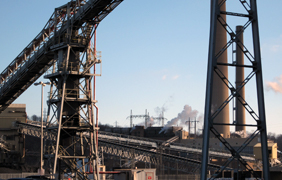Optimizing Your Precipitator, One Step at a Time
Optimizing the performance of your power plant’s precipitator might seem like a daunting task. Ever feel that there just isn’t money, expertise or manpower to achieve meaningful results? This technical tip is the first in a series focused on realistic modifications that result in the biggest bang for your buck.
The most effective performance improvement projects start with evaluating what needs fixing, and then using performance prediction tools to take the guesswork out of optimization. With this phased approach, you’ll find out what will make the biggest difference: internal upgrades, gas flow modifications, process improvements, or a combination of these.
Step one: collect data about your ESP’s design, internal and gas flow distribution components, fuel and ash composition, and stack test results. Together, these pieces of information provide a baseline picture of ESP performance. You can then use computer-generated and physical models to explore the cost-benefit tradeoffs of different options.
This time of year, it’s likely that an upcoming planned outage is on your mind. How do you make best use of this time? Some urgent repairs are no doubt needed, and you can’t ignore them. However, if there is time and manpower, a physical inspection of the ESP is an excellent investment of resources. The information gleaned from such an inspection often makes the difference between upgrades or modifications that hit the mark, and those that don’t. After all, knowledge is power.
Helpful Resources
KnowledgeBase: Theory of Operations
KnowledgeBase: Process Influences & Keys to Performance
KnowledgeBase: Optimizing Precipitator Power Circuits
KnowledgeBase: Optimize Corona Power
KnowledgeBase: Improve Flow Distribution
KnowledgeBase: Reduce ReEntrainment


